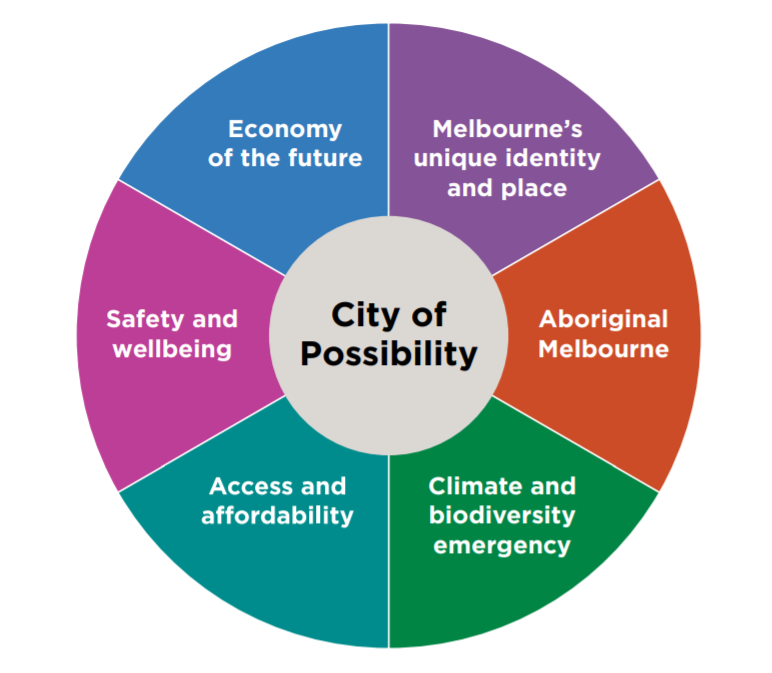Community connection
- Read the postcards.
- Explore the community wall.
If viewing on mobile, hold and swipe tabs left to view all.
Check out what others have already shared below about Docklands assets and strengths.
We asked:
Docklands is a high density residential, commercial and entertainment focused waterfront neighbourhood located to the west of the city centre around the historic Victoria Harbour and Yarra River Birrarung.
Approximately 16,000 people live in Docklands making up 9% of the total population of the City of Melbourne LGA.
Approximately 28% or residents were born in Australia and 35% speak English as their only language. Other than English, Hindi, Mandarin and Cantonese are the most common languages spoken at home.
People aged between 25-34 make up the largest age demographic.
Over 54% of residents in Docklands are privately renting their home.
*based on pre-covid data
Boundary of Docklands - select image to enlarge
Data is sourced from 2021 Australian Bureau of Statistics (ABS) Census of Population and Housing, ABS Estimated Resident Population 2021, and 2020 Census of Land and Employment (CLUE).
To access more data on Docklands, visit: Docklands community profile on profile .id.
To learn more about the ABS Census of Population and Housing, including definitions, visit: Guide to Census data.
See the ideas forum.
Seven initiatives represent our city’s plan for reactivation and recovery following the COVID-19 pandemic. Together, they connect our immediate response to the crisis with our city’s longer-term regeneration. By linking the actions that we take in the short-term with the outcomes we want to see in the future, we can ensure that we target our resources to those initiatives that best meet our long term strategic objectives and ultimately deliver maximum benefit for our city and its citizens.
Read the full consultation recap.
The COVID-19 Reactivation and Recovery Plan integrates with the Council planning framework and City of Melbourne’s strategic plans and is designed to help guide and shape our work now and into the future.
Read the COVID-19 Reactivation and Recovery Plan.
We spoke with more than 750 people who live, work, study, visit or own a business in the municipality to understand what our community values most about the city.
Overall, the community’s top aspirations were for Melbourne to be a city that:
Read the full consultation recap.
The community’s feedback was gathered and synthesised into a series of insights and aspirations that helped to create the 10-year Community Vision and four-year Council Plan.
Read the Consultation Report (PDF 1.06MB).
Six strategic directions from the Council Plan include:

Planning for economic recovery and reactivation in the City of Melbourne in a post-COVID world.
Read the full Economic Development Strategy 2031.
In 2018 we asked the community how they would use or would like to use Ron Barassi Snr Park.
Feedback was collected at a number of pop-up sessions at Docklands and an Open Day at the park.
294 responses were collected and collated in a Community Consultation Summary. The summary describes what we heard and what actions we're taking in response to the feedback.
Read the Summary.
In 2010 more than 3700 people shared their views for the future of Docklands. The resulting feedback informed the Docklands Community and Place Plan, which was launched by the City of Melbourne and Places Victoria (now Development Victoria) in July 2012.
Read the Docklands Community and Place Plan.
New infrastructure investments in Docklands this year include:
We will invest $3,174,900 on renewal works in Docklands on the Melbourne City Marina Renewal, the Waterways Renewal Program as well as renewal of roadways, drains, parks, landscape, library collection and property.
We will invest $285,692 on maintenance works in Docklands including Wharf and Marina maintenance on community facilities and other property, safe city cameras and urban forest health.